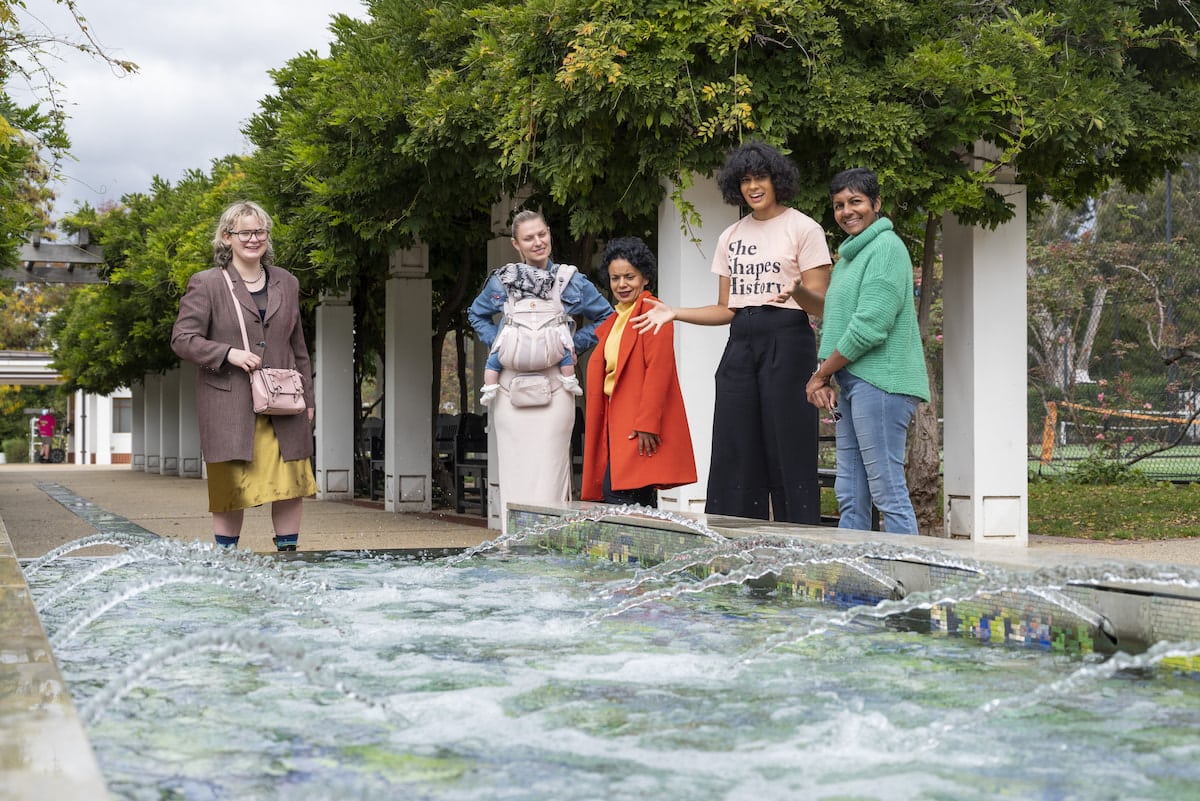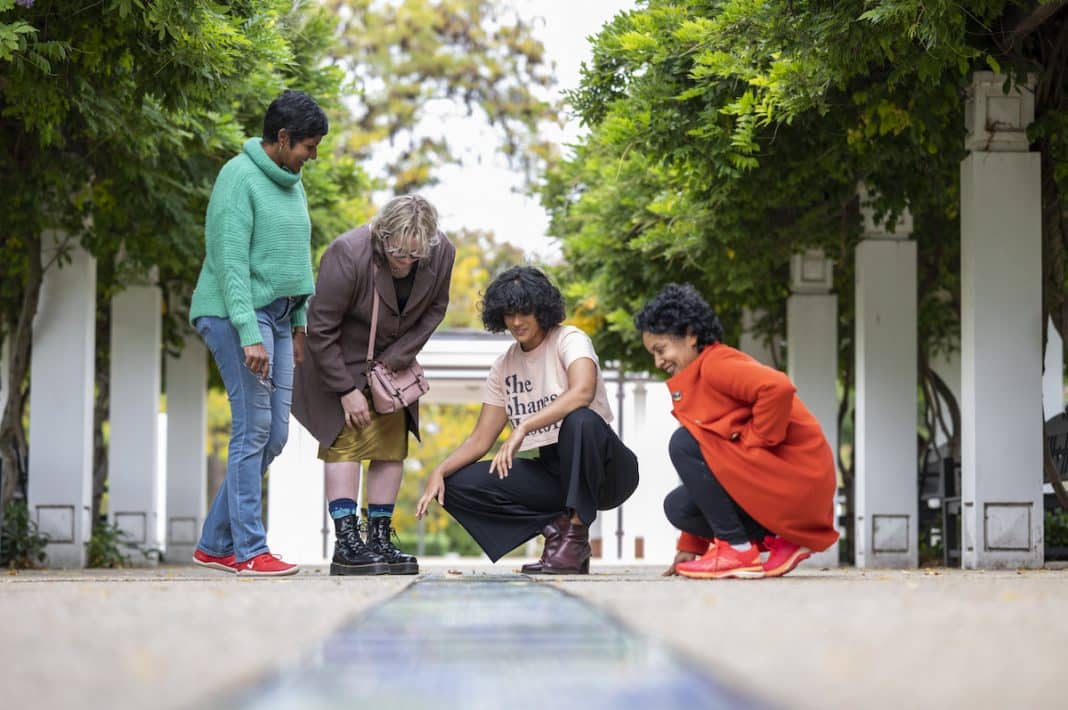In 1933, Dame Mary Hughes, Dame Enid Lyons, and other wives of parliamentarians were asked to help support the Ladies Rose Garden. They agreed, and soon commenced gathering donations of one shilling and four pence per rose.
Today, the Ladies Rose Garden adjacent to Old Parliament House is open to the public as a tranquil picnic spot, complete with free tennis courts and pathways to promenade through.
It is also a key stop on the She Shapes History walking tour – one of Canberra’s only walking tour businesses – which aims to answer the question ‘where are the women in the story of Australia?’
“When parliamentary members and senators first arrived in Canberra, they were met with nothing but a big white building, referred to as the wedding cake, jutting out of the landscape,” explained Sita Sargeant, She Shapes History founder and tour guide.
“One day, Secretary of the Joint House Department, Robert Broinowski had a vision of this miraculous rose garden.
“So, he did what any sensible man with a vision does and turned to the women in his life – who then ended up managing this massive project,” Sita said.
“These women put the call out and got donations from across the country to fund roses.” Dame Mary Hughes and Dame Enid Lyons exercised leadership at a time when women weren’t perceived as leaders. It’s because of them that the gardens exist.
“The thing is, because this space was made for members and senators only, Dame Mary Hughes and Dame Enid Lyons couldn’t use the gardens,” said Sita. “That was the story of Australia at the time: Women built it, weren’t allowed to use it.”
Sita noted the significance of the gardens being open to everyone today. “This place is meant to be used by the people, yet not a lot of people know about it.”
To date, all the statues erected in the National Triangle are of men. In the centre of the Ladies Rose Garden is the only monument to women in the Triangle.
The Centenary of Women’s Suffrage Fountain was built in the colours of the Suffragettes: Green, white, and purple. When the plentiful wisteria is in bloom, you can see the vision from decades before.
“This fountain commemorates the moments when women broke the glass ceiling in Australia,” said Sita, gesturing to the fountain’s stone timeline.

There is a 40-year gap in the fountain’s path. “Women won the right to run for office in 1902, when they won the right to vote,” said Sita.
“Australian women were the first in the world to win the right to stand as candidates in state elections, but it would be another 40 years before the first women were elected to Parliament House – one of the longest gaps in the world.
“When Old Parliament House was designed in the 1920s, two decades after women had won the right to vote, it didn’t include any women’s toilets in the building.
“The first women’s toilet wouldn’t be put in until the 1970s. Before then women who worked in Parliament House had to duck home to relieve themselves,” said Sita.
Testament to the gumption and willpower of women in the capital, Australia has come a long way since then.
Here, however, is where many tour participants notice the second disparity in the fountain.
“It stops at Julia Gillard,” said Sita.
“We’ve seen so many more firsts since then, including Penny Wong, our first openly LGBTQ federal parliamentarian.”
One of the only monuments to women in the capital, and it’s been left incomplete; as Sita says, “Like, Julia Gillard, bam, we’ve reached equality.”
The National Capital Authority (NCA), following a past statement that there are no plans to extend the Fountain due to lack of public interest, have revisited their stance in a disclosure to CW.
“It is time for us to revisit our previous position,” said an NCA spokesperson. “To this end, we are reviewing plans to ensure there is a way to recognise the tremendous strides women are making in politics, either as part of the Centenary of Women’s Suffrage Fountain or close by.”
Dame Enid Lyons will be subject of one of the first statues of women in the National triangle – the other being Dame Dorothy Tangney – sited nearby the Fountain.
The statues will commemorate the first women to sit in the Senate and the House of Representatives – arriving at work on their first day in 1943, walking into Parliament House together.
To learn more about the silent stories behind women who shaped the capital, visit sheshapeshistory.com.au
Canberra Daily would love to hear from you about a story idea in the Canberra and surrounding region. Click here to submit a news tip.



